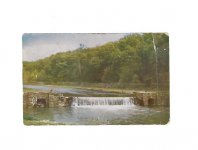Nymph-wristed wrote:
mcarney99 wrote:
I think the dam should stay for two reasons: keep ww fish from swimming upstream and munching on BT eggs in the fall. And that “frog water” section above the dam isn’t desirable to flyfish due to the fact the banks are steep straight down into slow deep water with mud bottom. The thing is this section is a refuge for larger fish on VC. There isn’t enough habitat on the creek above for a lot of bigger fish. Every time a log jam forms or some sort of other cover it blows out in a storm eventually and gets filled in with silt or gravel. This section is permanent refuge for big trout with multiple springs adding cool water. Also gives the fish a break from constant pressure because of how difficult it can be to present a fly in this section. A LOT of valley numbers are due to larger fish hiding in the shadows of this section and swiming upstream in the fall to spawn. If you remove the dam and subsequently this section will shallow out and give these fish less habitat. Valley number will suffer in the long run I’m almost sure. I have seen fish in the upper section move down into this section once they’ve hit a certain size and have had enough flies bounced off their heads. It’s valley creeks retirement community for some of the bigger wiser fish. The fish we need breeding in valley not turning into musky food in the river or having to move upstream and being caught 4 times a month because the water is too shallow in that section.
\
That is a very interesting theory, for sure. I just wonder if there is any proof beyond anecdotal (ie I see big fish there all the time) because I have caught fish as large as 19 inches in good, big fish water like undercuts, log jams, etc a long way from that long slow pool. Has that stretch been electroshocked, for example? If your theory were true, wouldn't the justification you shared be an argument for not taking down most dams on small creeks? Or is this about proximity to the dirty Skuke... The big fish seem to find a way, I think, and Valley fish in general are nothing if not resilient based on their tattered past...
Beautiful painting too, Dave!




